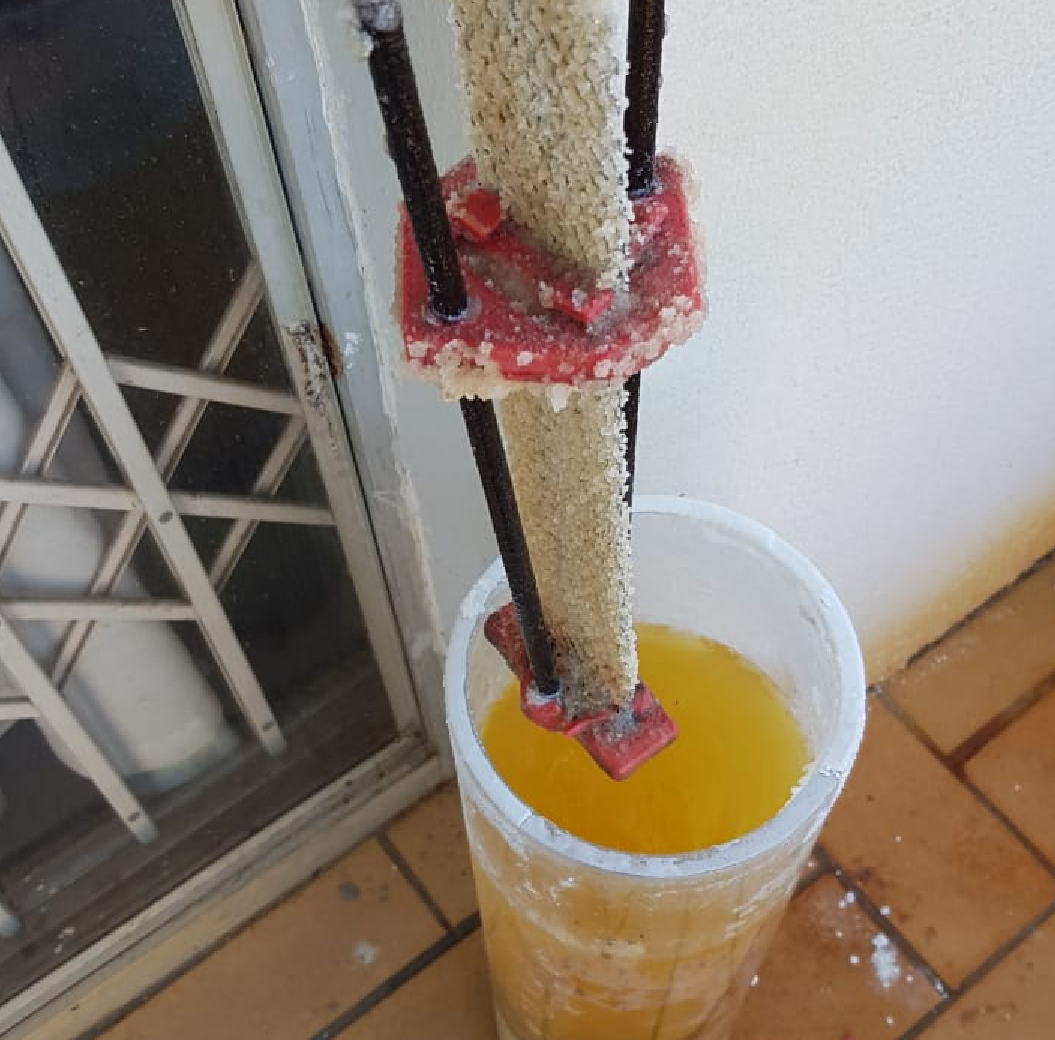A friend of mine just purchased an MMO anode with titanium substrate off eBay and used it to make KClO3. He used diet salt (a mix of 1/3 part NaCl and
2/3 part KCl by weight). He had a run from a 5V power supply and let this cell run until current had dropped strongly and as a consequence the cell
cooled down and solid KClO3 crystallized. He used no additives in the solution and used a stainless steel cathode. After a few days of electrolysis he
had a lot of solid KClO3 which easily could be separated.
He disassembled the cell, cleaned the electrodes and worked up the KClO3. Now he has purchased pure KCl and wants another run, but to our horror, the
anode does not work anymore! When a concentrated solution of KCl is used, then only 0.2 A is running through the cell. Different cathodes were used,
but always the same result, just around 0.2 A of current. He tested the power suppy and the cathode and these are just fine. It really has to to with
the MMO anode.
It seems as if the anode has passivated. The anode was thoroughly cleaned and kept in clean water for some time, hoping that it would remove some
invisible layer, but this also does not work.
What is causing this problem and what can be done about it? I do not have real knowledge about this subject and could not find good info on internet.
Does anyone else have a similar experience or know of this? |









 sounds good!
sounds good!





 .
.










